How to Raise a Puppy: Dog Training Tips for New Pet Parents
Did you just bring home an adorable puppy?
Did you just bring home an adorable puppy?
by Katie Koschalk, | March 14, 2024
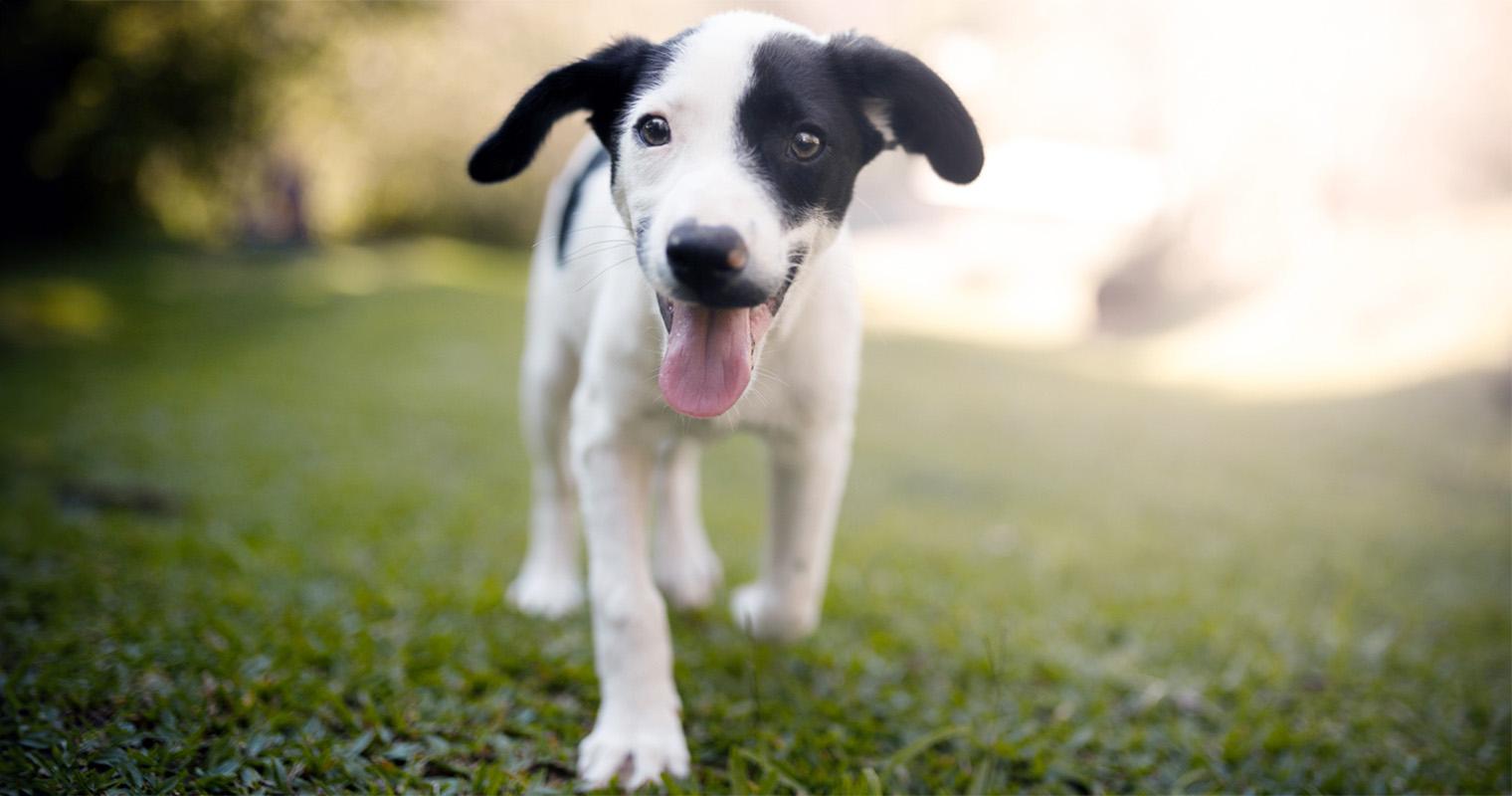
Capuski / iStock
Puppies are arguably the cutest creatures on the planet, but let’s face it — raising a well-adjusted, happy puppy is a big undertaking. It demands a lot of time, tons of patience, and a commitment to ongoing training, socialization, and care — not to mention, cleaning up an accident (or 20).
But, with the right knowledge and tools, raising a puppy can be done effectively (and without driving you bananas). This guide aims to equip you with the knowledge needed to confidently navigate the journey of puppy parenthood.
Getting ready to welcome a new puppy into your home is akin to gearing up for the arrival of a human baby (well, almost). Here’s a checklist of what to do and have ready before your puppy’s arrival:
Because of puppies’ innate curiosity, it’s crucial to puppy-proof your living space before their arrival. This involves eliminating any potential hazards that could pose a risk to their wellbeing. Take a thorough inventory of your home, identifying, removing, and hiding hazardous items, such as:
Small objects that could be swallowed
Electrical cords (puppies love chewing on these)
Household chemicals
Toxic foods (chocolate, grapes, anything with xylitol, etc.)
You’ll need to have several essential items on hand before your puppy’s arrival. This includes:
Food and water bowls
High-quality puppy food and dog treats
Collar with ID tag
Leash and harness
A dog bed
Toys
Crate or puppy pen
Puppy-safe shampoo
Pet-safe home cleaner
Decide on house rules for your puppy from the beginning, and ensure that everyone in your living space is on the same page. Establish areas where your puppy is allowed to go and areas that are off-limits. Consistency is key to helping your pup understand what is expected of them.
How do you raise a confident, friendly puppy? Puppy socialization is the golden ticket. Below are some basic puppy socialization guidelines:
Create positive experiences: The overall plan is to slowly introduce your puppy to different noises, sights, smells, people, places, and experiences. The goal is to teach them to be calm, confident, and well-behaved in a wide variety of situations. The key, though, is to make the experiences enjoyable for your puppy. It doesn’t do any good to expose them to, say, a room full of very loud children who pull on your puppy’s ears — that’s terrifying and not effective socializing.
Reward the good: As you expose your puppy to different stimuli, praise them and reward them with treats for calm, positive responses.
Don’t feed into fear: If your puppy responds fearfully to anything new, remove them from the situation. But, avoid reassuring them, as reassurance is a form of praise. You don’t want to praise them for acting scared; this will reinforce the fearful behavior. Fearful body language to watch out for includes a tucked tail, trembling, lying down or hunching over and not wanting to move, and pulling on their leash to try to escape.
Animals adopted from shelters and rescues typically have undergone a wellness exam, have been spayed or neutered, and come with microchips and up-to-date vaccinations. But, if you adopt from a private party, you’ll probably be responsible for getting your puppy all of the above.
Regardless, you’ll want to schedule your pup’s first veterinary appointment shortly after bringing them home. This initial visit serves to complete their core vaccinations, address other health needs, check their overall health, and establish care with a local clinic. Learn how to choose a good vet for your puppy here.
Note: Puppies should receive a minimum of one set of vaccines and a first deworming at least seven days before their first puppy socialization class. You should also make sure the puppy class screens for vaccinations prior to admission. Puppies should be kept away from areas where other dogs frequent (parks, trails, busy streets, etc.) until a week after they’re fully vaccinated.
Housetraining your puppy (aka teaching your puppy to pee and poop in appropriate places) is one of the first and most important tasks as a new dog parent. Here are some key steps to successful training.
Stick to a regular schedule for bathroom breaks. Predictable routines help your puppy learn when and where they should do their business, promoting better bladder and bowel control. Puppies typically need to go shortly after waking up, after eating or drinking, after playing or exercising, and just before bedtime.
Choose a specific area outside where you want your puppy to pee and poop. Take them to this spot each time they need to go, using a consistent verbal cue like “go potty” to encourage them.
When your puppy uses the designated area, praise them and offer a treat as a reward. Positive reinforcement helps your puppy associate peeing and pooping outside with good things, encouraging them to repeat the behavior.
Keep a close eye on your puppy when they’re indoors. Use baby gates or a crate to confine them to a smaller area when you can’t supervise them closely, gradually expanding their freedom as they demonstrate reliability.
Accidents will happen, and it’s important to clean them up quickly and thoroughly to remove any lingering scent that might attract your puppy back to the same spot. Use an enzymatic cleaner designed specifically for pet messes.
Do not scold or punish your puppy for accidents. Punishment can create fear and anxiety, hinder the housetraining process, and damage the bond between you.
Basic puppy training lays the foundation for good behavior and helps strengthen your relationship with your pet. Start with name recognition, leash training, and simple commands like “sit,” “stay,” “come,” and “leave it.” Gradually increase the difficulty as your puppy progresses.
If your puppy acts poorly (jumping up, barking, growling, etc.) during a socialization exercise, move away from the trigger. You can try again later or the next day, but take it slower, starting from further away. Praise your puppy for positive responses and gradually move closer until they’re immersed in the situation and remain calm.
Now for some socialization exercises. For each exercise, reward your puppy for any positive or appropriately friendly response.
Noises: Play audios of various noises: doorbells ringing, vacuum cleaners running, doors slamming, music playing, dogs barking, cats meowing, etc. These can be found on YouTube. Start at a low volume and, over time, raise it to a real-life level.
Places: Take car rides or walks to visit friends, pet supply stores, parks, beaches, dog-friendly cafes — everywhere and anywhere dogs are allowed.
People: Try introducing your puppy to at least one new person daily for the first few weeks: a store clerk, the mailman, your neighbors, your neighbors’ kids, friends, family, strangers walking down the street, etc. Start by just standing near the person and then, once they’re comfy, you can allow the people to feed the pup treats while petting them.
Other animals: Puppy socialization class is a great place to introduce your dog to other dogs. These classes provide structured opportunities for puppies to interact with other puppies in a controlled environment. This supports their social development and helps them learn appropriate behaviors.
Can you raise a puppy while working full-time? It’s undeniably challenging, but with proper planning and some tweaks, it’s possible. Here are some things to consider:
Puppies have small bladders and need frequent bathroom breaks — at least every two hours. If you’ll be away from home for a considerate chunk of time, you’ll need to hire a dog walker or ask a trusted friend or neighbor to stop by and let your puppy out for a potty break.
If your finances allow, enrolling your puppy in a reputable puppy daycare facility can provide valuable socialization opportunities and supervised playtime while you’re at work.
If you have a spouse or friend who’s willing to share the responsibilities of caring for your puppy, consider dividing the day into shifts. This way, one person can attend to the puppy’s needs while the other is at work, ensuring that your puppy receives the necessary care and attention throughout the day.
If your job allows for remote work, consider working from home at least part of the time. This will enable you to supervise your puppy, take them out for bathroom breaks, and provide companionship during the day.
Crate training can help keep your puppy safe and out of trouble while you’re at work. But, puppies should not be crated for more than three to four hours at a time.
As your dog ages, you’ll likely be able to confidently leave them alone for longer stretches. But, regardless of age, be sure you have the time and resources to provide your dog with the love, attention, and care they need and deserve.
How much does it cost to raise a puppy? The ASPCA estimates the initial expenses of getting a puppy to be $1,030. This includes the cost of spaying/neutering, microchipping, initial vaccines, socialization classes, and essential supplies like a collar, leash, crate, food bowls, etc.
After those initial bills, they estimate the annual cost of raising one dog to be $1,391. This includes food, routine medical expenses, preventative medication, toys, treats, health insurance, boarding, and grooming supplies. This figure does not include additional costs due to medical emergencies or illnesses.
As for time, raising a puppy can feel like having a second job (except you’re paid in urine, slobber, and cuddles). It requires a significant time commitment, especially during the early stages of housetraining, socialization, and basic obedience training. Plan to spend at least three hours daily (spread them out across the day) to meet your puppy’s physical, emotional, and behavioral needs.
Raising a puppy can be challenging and requires time, patience, consistency, and dedication. Puppies need training, socialization, and constant supervision, similar to caring for a young child.
Puppies usually reach maturity between 12 and 24 months old, and basic training, and socialization is typically completed within this timeframe. But ongoing training, socialization, and care are necessary throughout a dog’s life.
Feed your puppy a high-quality puppy food in small, frequent meals throughout the day — typically three to four times a day for young puppies. As they grow, you can gradually transition to feeding them larger meals twice a day.
If you live in an apartment or another small living space, opt for space-saving puppy supplies, such as a collapsible or foldable dog crate, and make strategic use of your storage space. Also, be sure your puppy gets enough outdoor exercise to prevent restlessness.
Ready to welcome a new puppy into your home and heart? Use Adopt a Pet’s customizable search tool to find your new best friend.
The amount and type of physical exercise a puppy needs varies depending on the puppy’s size, breed, and health. But, in general, veterinary researchers recommend that puppies walk for five minutes multiplied by every month of their age, twice a day (i.e., 15 minutes twice a day for a three-month-old puppy).
How Much Mental and Physical Exercise Do Puppies Need?

Katie Koschalk is a freelance writer based in Northern California. Fusing her love and knowledge of animals with her journalism degree and years of professional writing, Katie is dedicated to improving the lives of pets and their caretakers by sharing helpful and accurate information. When she’s not at her desk, you can find her exploring trails with her Aussie, Hunter, cooking plant-based meals, and talking to her two cats, Jax and Sadie, in really ridiculous voices.
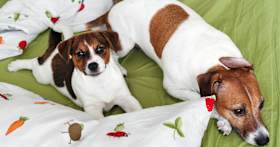
Adoption Advice

Adoption Advice
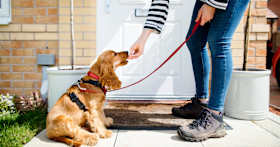
Behavior & Training
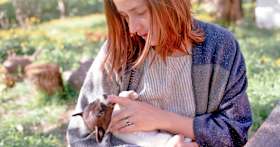
Adoption Advice
If you’re feeling overwhelmed or sad after bringing home a new puppy, you’re not alone.
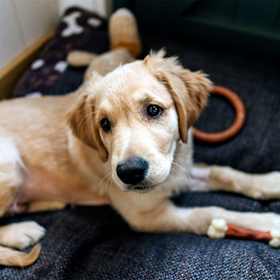
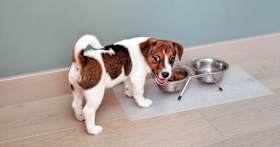
Adoption Advice
Help your underweight puppy achieve a healthy weight with these expert tips and feeding strategies.

Behavior & Training
Is your new pup biting everything? Learn effective ways to curb this behavior by teaching bite inhibition.
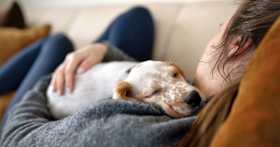
Adoption Advice
These bundles of energy can be a bit much without proper naptimes. Here’s how to put your little pup on a schedule that will keep everyone happy.
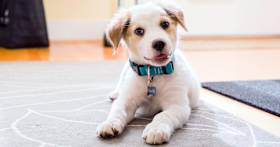
Behavior & Training
Check out these tips for new puppy parents on managing their alone time and preventing separation anxiety.